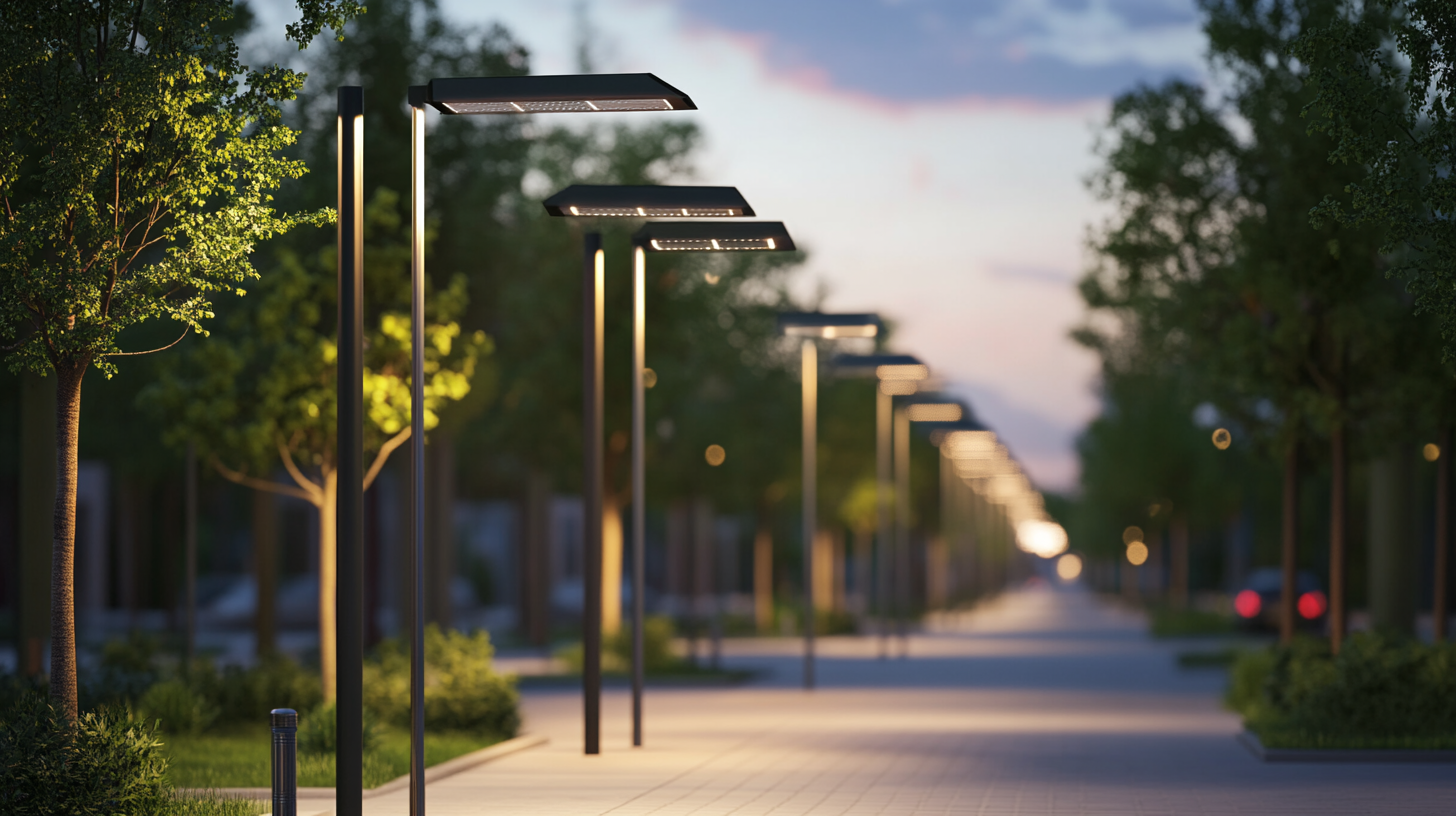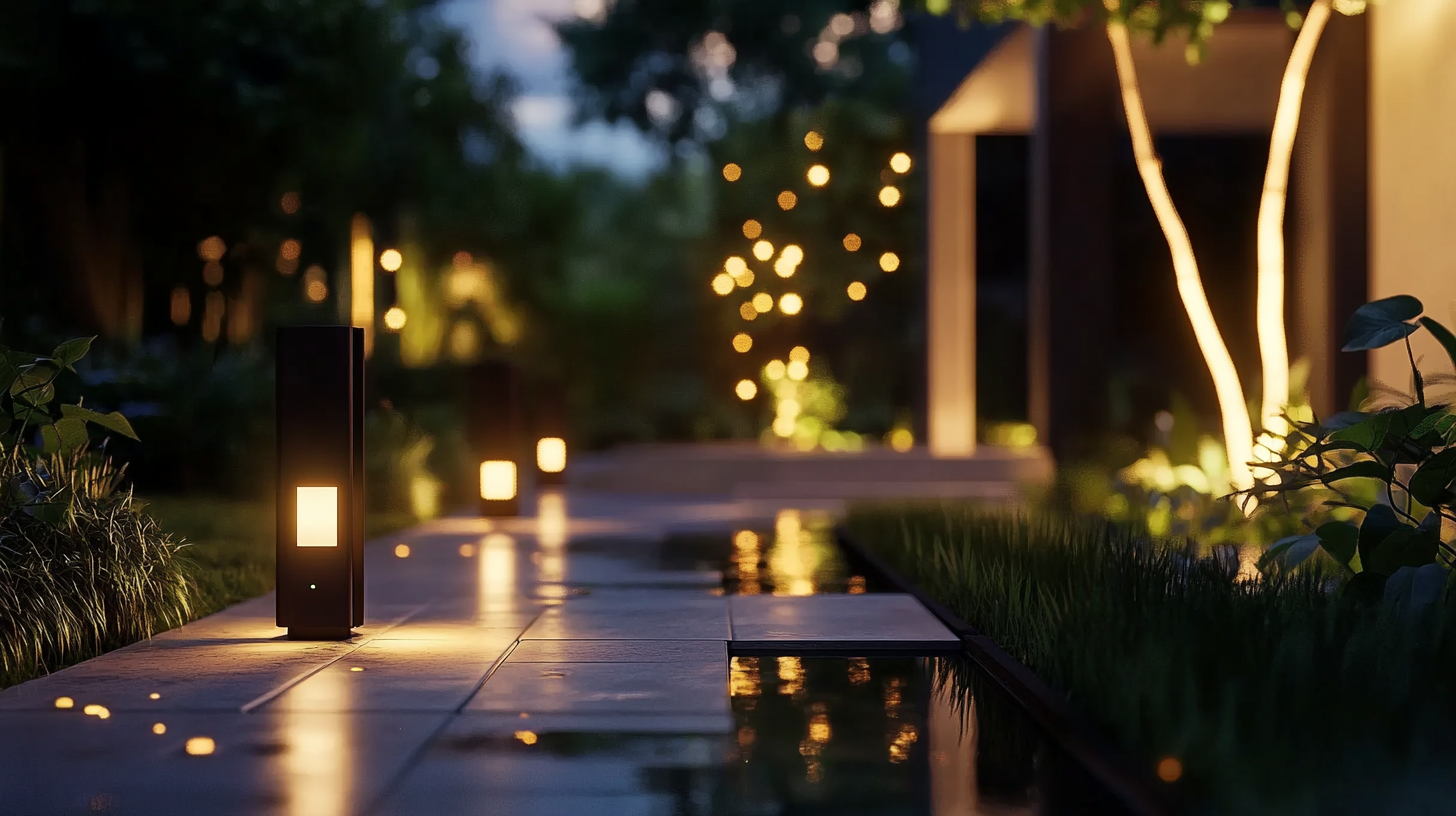6 Essential Insights for Choosing Solar Lamps Outdoor
As the world shifts towards sustainable energy solutions, the demand for Solar Lamps Outdoor continues to rise dramatically. According to a report by the International Renewable Energy Agency (IRENA), solar lighting technology has been gaining traction, with a projected growth of over 25% annually in the coming years. This surge in popularity is not just due to the increasing awareness of climate change, but also because solar lamps offer a cost-effective, eco-friendly way to illuminate outdoor spaces. The need for efficient outdoor lighting solutions is paramount, with global lighting consumption accounting for about 19% of total electricity use, as highlighted by the Global Lighting Association.
When considering the purchase of Solar Lamps Outdoor, it is crucial to understand the various factors that can influence their performance and longevity. A study by the U.S. Department of Energy revealed that improperly chosen or installed solar lighting can lead to increased operational costs and reduced efficiency. As homeowners and businesses alike seek to enhance their outdoor aesthetics while embracing sustainable practices, knowing what to look for in high-quality solar lamps has never been more essential. This blog will delve into six key insights that can guide your decision-making process, ensuring you make the best choice in the burgeoning market of solar outdoor lighting.

Key Factors to Consider When Choosing Solar Lamps for Outdoor Use
When selecting solar lamps for outdoor use, several key factors should be considered to ensure you invest in a product that meets your lighting needs while maximizing efficiency. First and foremost, the brightness of the solar lamp, measured in lumens, is crucial. According to the U.S. Department of Energy, a basic outdoor solar lamp should emit a minimum of 100 lumens for effective illumination in pathways and gardens, while those intended for security purposes may need to reach upwards of 800 lumens. Another important factor is the type of solar panel used in the lamp. High-efficiency panels, such as monocrystalline silicon, typically convert sunlight to electricity more efficiently than polycrystalline or amorphous panels. A report from the National Renewable Energy Laboratory indicates that monocrystalline panels can achieve efficiencies exceeding 20%, making them a sound investment for reliable outdoor lighting. Battery capacity is also a key consideration, as it determines how long the lamp can operate nightly on solar energy. Opt for lamps equipped with high-capacity lithium-ion batteries, which can hold more energy and offer longer runtimes compared to traditional lead-acid batteries. Studies suggest that lithium batteries can maintain capacity over numerous charge cycles, ensuring consistent performance throughout the seasons. Lastly, look for features like waterproof ratings and durability specifications. The American Society for Testing and Materials (ASTM) recommends that solar lamps designed for outdoor environments meet a minimum IP65 rating for dust and water resistance. This ensures the longevity of your investment, even in challenging weather conditions, making it essential for outdoor applications.

Understanding Solar Technology: Types of Solar Lamps Available on the Market
When it comes to enhancing your outdoor space, understanding the different types of solar lamps available in the market is crucial. Solar lamps harness solar energy, typically utilizing photovoltaic cells to convert sunlight into electricity. Among the various options, string lights, path lights, and motion sensor spotlights stand out for their versatility and unique functionalities. For instance, string lights create a warm, inviting ambience for outdoor gatherings, while path lights not only illuminate walkways but also add a decorative touch to your landscape.
Another noteworthy advancement in solar technology is the integration of thin-film solar cells. These lightweight, flexible solar panels improve energy efficiency, making solar lamps more effective in capturing sunlight, even on cloudy days. As solar technology continues to evolve, the variety of designs and functionalities expands, ensuring there's a solar lamp to fit every need and aesthetic preference.
The growing popularity and effectiveness of solar lighting systems signal a promising future for outdoor illumination. With the solar street lighting market projected to reach significant milestones in the coming years, it's evident that more homeowners are recognizing the benefits of eco-friendly, cost-effective lighting solutions. Whether you're looking to brighten your backyard or enhance security with motion sensor lights, understanding the types of solar lamps available can help you make an informed decision that elevates your outdoor space.

Evaluating Brightness and Lumens: How Much Light Do You Really Need?
When it comes to evaluating brightness and lumens for outdoor solar lamps, understanding your lighting needs is essential. The brightness of a lamp is measured in lumens, which indicates the amount of light emitted. For general outdoor illumination, a range between 100 to 300 lumens is usually sufficient, while security lighting or areas requiring more visibility may benefit from options that exceed 500 lumens. By considering the specific purpose of the lighting—be it for ambiance, safety, or decorative purposes—you can make a more informed choice.
It’s important to note that not all outdoor lighting needs the same level of brightness. For instance, garden pathways might only require softer illumination compared to driveways or patios where activities take place at night. In recent reviews of various lighting products, devices with exceptionally high lumens, such as those ranging from 8,000 to 120,000, demonstrate the immense differences in brightness available on the market. However, such intense lights may not always suit casual outdoor uses as they can create overly harsh environments.
Ultimately, choosing the right solar lamp involves balancing brightness with efficiency and purpose. Look for adjustable settings that allow you to modify the intensity based on the time of day or specific needs. With the right approach, outdoor solar lamps can significantly enhance both the safety and aesthetic appeal of your space, serving their functional roles without overwhelming the atmosphere.

The Importance of Battery Capacity and Solar Charging Efficiency
When it comes to selecting outdoor solar lamps, two critical factors to consider are battery capacity and solar charging efficiency. Battery capacity determines how much energy the solar lamp can store, directly affecting its operational time. A higher capacity means that the lamp can provide illumination for longer periods, even during extended cloudy days or after sunset. Therefore, when evaluating solar lamps, look for those with batteries that have a capacity suited to your specific lighting needs.
Equally important is solar charging efficiency, which refers to how effectively the lamp's solar panel converts sunlight into electricity. A lamp with a high charging efficiency will require less sunlight exposure to reach full battery capacity, making it invaluable in regions with less than optimal sunlight. Different models may vary significantly in this regard, so identifying lamps equipped with high-quality solar panels will ensure that they can maximize their energy storage, providing consistent lighting throughout the night.
Combining sufficient battery capacity with high solar charging efficiency will result in a reliable and durable outdoor lighting solution. This balance ensures that your solar lamps not only illuminate your space but also function efficiently, reducing maintenance and replacement costs in the long term.
Durability and Weather Resistance: Ensuring Long-Term Performance in Outdoor Conditions
When selecting solar lamps for outdoor use, two fundamental factors stand out: durability and weather resistance. These elements are critical to ensuring long-term performance, especially considering the harsh elements that outdoor lighting can encounter. According to a study by the National Renewable Energy Laboratory, high-quality solar products can sustain their functionality for over 25 years, provided they are designed to withstand extreme weather conditions.
Durability begins with the materials used in construction. High-impact plastics and corrosion-resistant metals are often recommended for solar lamps exposed to rain, snow, and strong winds. For instance, a report from the Solar Energy Industries Association indicates that solar lamps made with aluminum casings can last almost twice as long in marine environments compared to their plastic counterparts, which tend to deteriorate under prolonged exposure to moisture.
Weather resistance also plays a pivotal role in the performance of solar lamps. Products that adhere to IP (Ingress Protection) ratings are preferred, with a minimum rating of IP65 recommended for outdoor use. This rating indicates that the device is completely dust-tight and can withstand low-pressure water jets from any direction. Lighting solutions that meet or exceed this standard are less likely to fail, making them a more reliable choice in locations facing unpredictable weather patterns, such as heavy rainfall or snowfall. Investing in solar lamps that prioritize these aspects ensures that your outdoor spaces remain illuminated without constant maintenance and replacement.
